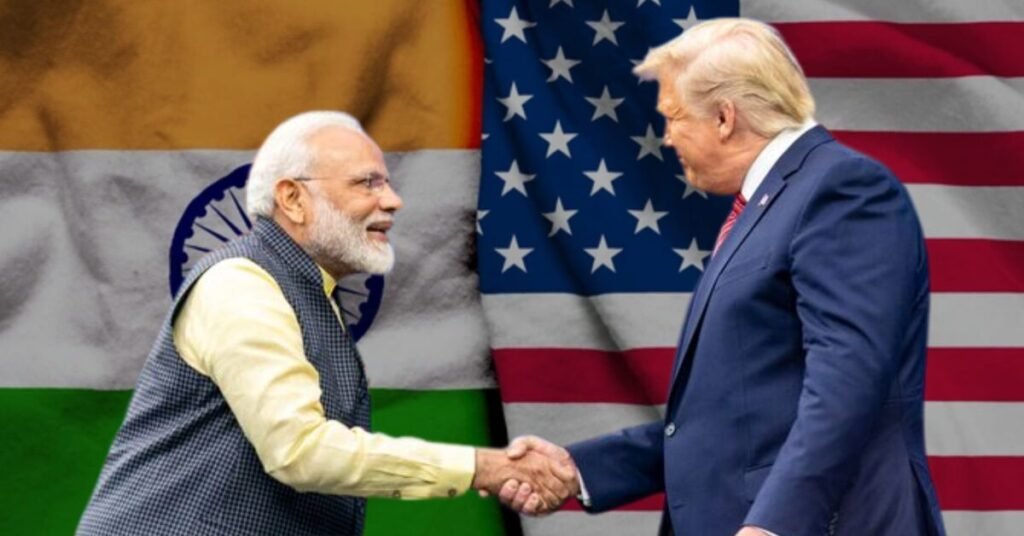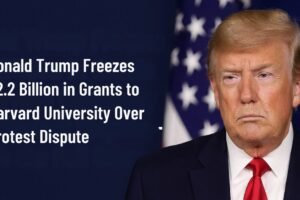
In a move that has reignited global trade tensions, former U.S. President Donald Trump announced a steep 26% reciprocal tariff on Indian goods, beginning April 9, 2025. While this may sound like a heavy blow to India’s export sector, trade experts and government officials believe the impact may not be as damaging as it appears. In fact, India may find several silver linings in this otherwise turbulent trade scenario.
The first positive takeaway lies in the comparative tariff rates. Although India will face a total tariff of 26%—including a universal 10% base duty and an additional 16%—many of its closest competitors are subject to even harsher terms. The U.S. has imposed a 34% duty on China, 46% on Vietnam, 37% on Bangladesh, and 36% on Thailand. This places Indian exporters in a relatively better position, especially in sectors like textiles, garments, leather goods, and light engineering, where India competes directly with these nations for U.S. market share. With American importers now re-evaluating sourcing partners to cut costs, Indian exporters may suddenly seem more attractive compared to their higher-tariffed counterparts.
While countries like Japan, South Korea, and the European Union enjoy lower tariffs, they do not directly compete with India in most of the product categories affected. This offers India a distinct edge, especially for small and medium-sized enterprises (SMEs) that can now position their goods more competitively in the American market. The current tariff structure, rather than putting India at a disadvantage, could help Indian businesses gain valuable export momentum amid global trade restructuring.
Another potential advantage comes from ongoing trade negotiations between New Delhi and Washington. Trump’s administration has made it clear that these reciprocal tariffs are not set in stone. Should India address the trade concerns raised by the U.S., there is room for revisions or even reversals. India and the U.S. are already engaged in bilateral trade discussions, aiming to finalize the first phase of an agreement by October this year. These talks provide India with an opportunity to negotiate concessions and reduce long-term trade frictions. In fact, the timing of this tariff implementation aligns with a recent USTR (United States Trade Representative) report which highlighted India’s high average MFN (Most-Favored-Nation) tariff rate—a statistic that made India an inevitable target. However, with the imposed tariff being relatively moderate, the situation is seen as a diplomatic win for India.
Unlike other nations like China or the European Union, which are reportedly preparing for retaliatory measures, India has chosen a more strategic, non-confrontational response. Indian officials believe avoiding an escalatory spiral will work better in the long run. Instead of jumping into a tariff war, India is looking inward to improve its own trade competitiveness. Experts believe this could be the perfect moment for India to reform its tariff structures, reduce barriers for foreign businesses, and give its Make in India initiative a renewed push. Moreover, this moment could spark broader negotiations with other trading partners—such as the UK, EU, and ASEAN countries—to lower trade barriers and improve bilateral agreements.
This development isn’t just about tariffs; it’s a test of trade strategy and policy agility. India now has the opportunity to turn adversity into leverage. By focusing on long-term competitiveness, reducing unnecessary protectionism, and supporting exporters with better infrastructure and market access, India could transform this challenge into a trade triumph.
As trade tensions rise globally, India’s calm and calculated response demonstrates a shift from reactive diplomacy to proactive global engagement. Whether the Trump-era tariffs remain or get rolled back, India’s readiness to negotiate, innovate, and adapt will likely determine its standing in the evolving world trade order.
Stay tuned to ibizznews.com for further updates.
Amazon’s TikTok Takeover? Surprise Bid Emerges Ahead of Government Deadline
Val Kilmer Dies at 65: Hollywood Mourns the Iconic Star Behind Batman, Top Gun & The Doors
Sikandar Box Office Day 3: Salman Khan’s Eid Release Creates History – Just One Film Ahead in Post-COVID Era!
Microsoft to Replace the Iconic Blue Screen of Death in Windows 11 – Here’s What’s Changing




